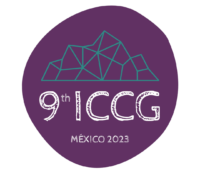The Latin American city has always been one of infrastructural breakdowns and patchwork repairs, where much of the urban life at the socio-spatial margins revolves around struggles to access, adapt to or bypass unreliable or malfunctioning infrastructure. People’s social and political relationships with the bits and pieces that constitute failing infrastructures can be categorized as an “urbanism of fragments”—a product of the city's highly unequal political, economic, cultural, and social relations (McFarlane, 2021). At the same time, forms of everyday governance and urban innovation may be found in these very social and political interactions and contestations around malfunctioning infrastructure (Boudreau, 2022). Building on these and other insights and recent socio-technical debates on infrastructure (e.g. Simone 2016; Wiig & Silver, 2019), Latin American urban politics (e.g. Goldfrank & Schrank, 2009), and policy mobilities (Montero, 2017; Whitney, 2022), this article examines the opening of urban planning investments, including an outdoor electric escalator, in La Araña, Mexico City. It also sheds light on political imaginations, image-making tactics, and notions of social mobility in the urban outskirts associated with “best practice” policy mobilities that fail on their promise or work only partially as intended.
In 2017, Mexico City’s officials hired Medellin’s municipal planners as consultants to replicate some of Medellin’s social urbanism interventions, including what they branded “Escalators of Justice” in La Araña. La Araña is an economically marginalized neighborhood geographically removed from Mexico City’s central areas. The escalator, and several other investments, were directly inspired by social urbanism in Medellín’s Comuna 13, where escalators were implemented with functional goals to improve accessibility in the neighborhood and as part of an anti-poor agenda grounded on claims to social inclusion. Since its construction in 2011, Medellin’s escalators in Comuna 13 have stimulated new imaginations of social mobility for low-income dwellers who may now see themselves as emerging middle-class citizens able to access –if nothing else– innovative infrastructure at their doorsteps (Sotomayor, 2015; 2017). The Medellin-Mexico City policy mobility was grounded on political claims to social justice and neighbourhood improvement for Mexico City’s poorest.
Despite the promise of Medellin’s “best practice,” the neighbourhood improvement interventions in La Araña had little articulation with other local and city-wide infrastructures. The public works were awkwardly sited and designed: they were abandoned midway or were scaled down to the point that they were insufficient to be useful for most residents. With a flawed design and a newly elected mayor, the escalators and adjacent projects were shut down only two years after the inauguration.
Instead of explaining this case as a failure, nonetheless, we aim to overcome the success/failure dualism present in much of the policy mobility research that pits best practices against policy failures, recognizing that the mobility of all policies, social urbanism or otherwise, carries nuances and complexities that are better understood relationally (McCann & Ward, 2011). We find that an adequate approach to elucidate current outcomes, in this case, is to situate the escalators’ malfunctions within Mexico City’s normalized landscape of infrastructural breakdowns and patchwork repairs. As Boudreau (2022) observes, breakdowns and “practices of repair” are key to understanding the pace of urban life and ideas of futurity, but also governance relations in Mexico City. In examining this case, we also ask whether and how reimagining these escalators may afford a chance for community-centred innovation and what the opportunities are for more equitable place-making at the infrastructural repair stage.
Keywords: infrastructure malfunctions; social urbanism; urban governance; policy mobilities; equity planning.
References:
Boudreau, J. A. (2022). City of repair: practicing the future in Mexico City. International Journal of Urban and Regional Research, 46(5), 851-864.
Graham, S. and Thrift, N. (2007) “Out of Order: Understanding Repair and Maintenance” Theory, Culture, and Society, 24(3): 1-25.
Goldfrank, B., & Schrank, A. (2009). Municipal neoliberalism and municipal socialism: urban political economy in Latin America. International Journal of Urban and Regional Research, 33(2), 443-462.
McCann, E., & Ward, K. (2011). Mobile urbanism: Cities and policymaking in the global age. University of Minnesota Press.
McFarlane, C. (2021) Fragments of the City: Making and Remaking Urban Worlds, Berkeley: University of California Press.
Montero, S. (2017). Study tours and inter-city policy learning: Mobilizing Bogotá’s transportation policies in Guadalajara. Environment and Planning A: Economy and Space, 49(2), 332-350.
Simone, A. (2016) City of Potentialities: An Introduction. Theory, Culture, and Society. 33(7-8): 5-29.
Sotomayor, L. (2015). Equitable planning through territories of exception: the contours of Medellin's urban development projects. International Development Planning Review, 37(4), 373.
Sotomayor, L. (2017). Dealing with dangerous spaces: The construction of urban policy in Medellín. Latin American Perspectives, 44(2), 71-90.
Whitney, R. A. (2022). FROM HERE, THERE, AND EVERYWHERE: English‐language Media Outlets and Urban Planning Best Practices in the Global South. International Journal of Urban and Regional Research, 46(3), 466-479.
Wiig, A. & Silver, J. (2019) Turbulent presents, precarious futures: urbanization and the deployment of global infrastructure, Regional Studies, 53:6, 912 923, DOI: 10.1080/00343404.2019.1566703
